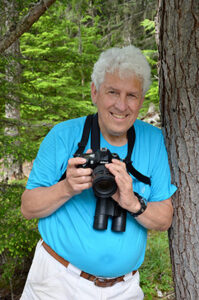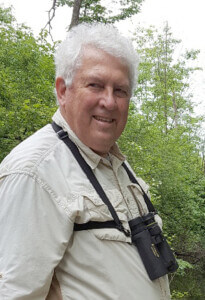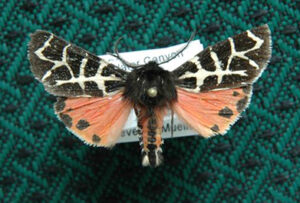 RANGER STEVE’S NATURE NICHE
RANGER STEVE’S NATURE NICHE
76 Natural Communities
by Ranger Steve Mueller
Seventy-six trombones led the big parade is a tune from the musical The Music Man. Hopefully, Michigan’s 76 natural communities within the Great Lakes ecosystem are even more popular. They are essential to the survival of specialized life forms adapted to unique habitats and for survival of human community health and wealth.
It would be exhausting to read about each species that finds a nature niche in those communities. What is important is that each community helps maintain a watershed, which holds and retains water for gradual release and reduces flooding. They purify water for drinking and keep streams and lakes from excessive siltation and uncontrolled bacteria growth. Their biodiversity contribution keeps regional conditions livable for us.
We have all heard of streams and lakes that become contaminated with E. coli bacteria resulting in beaches being closed to human use. They become dangerous for wildlife. Too often botulism kills ducks, loons, and other wildlife. Most contamination is a result of human mismanagement of the natural communities.
We cannot properly manage a resource if we do not know the inhabitants or their requirements for life.
The Michigan Natural Features Inventory (MNFI) works to identify natural communities and their inhabitants. MNFI identified 76 natural communities in the state, but they won’t be listed here. Some major community headings that have specialized sub-communities are marsh, shrub wetland, forested wetland, forested, and bog.
Within the forested communities, we find dry northern, dry-mesic northern, mesic northern, dry southern, dry-mesic southern, mesic southern, boreal forest. These are just seven of the 76 communities. It is not the purpose here to elaborate on each of the specific habitats or the species that depend on them.
Be assured that all 76 have a diverse group of pollinators with complex food webs. Each captures carbon with some being more effective than others. They have renewable and non-renewable resources.
Managed effectively, they provide a healthy environment that sustains human communities. The most cost-effective management is by natural community self-management. When allowed to remain intact they support human communities. It is impossible to leave all habitats untouched and still eke out a living.
The challenge before us is how to support our wellbeing in natural communities without significantly damaging them. Some areas logged a century ago still have not recovered and are unable to support local economies. Kingston Plains near Pictured Rocks is one example. Some aquatic communities can no longer support sustainable fish populations and require stocking. Lake trout populations in the Great Lakes have plummeted.
Management varies from continent wide laws like the migratory bird treaty to state game laws and small local site-specific development regulations. A sound approach depends on understanding biotic organisms within a landscape ecosystem. When we study natural communities, we start with the broad ecosystem and then consider the physical environment that defines what plants and animals can thrive in them. That’s one reason why organizations like Wild Ones are so important.
A segment of society recognizes healthy land supports healthy people and they consider people as part of the land. Natural communities need to be shared by all life to support people and the species living in them.
Another segment of society considers people as separate from nature. Land’s wealth is to be harvested for personal use without consideration for natural community survival needs. If land is wild, it is considered wasted land. Their efforts are to control nature in a manner they determine is an improvement for human benefit.
The biggest difference between the two is whether people live as part of the land like Wild Ones or apart from it. Contemplate how you view land use and its impact for sustaining present and future generations.
 RANGER STEVE MUELLER
RANGER STEVE MUELLER
(4/13/1950 – 6/16/2022)
We remember Ranger Steve Mueller, lepidopterist, teacher, naturalist, photographer, and writer who passed away recently. Steve was a Wild Ones member and former advisory board member in the early years of the River City Chapter. On several occasions Steve presented programs to Wild Ones. His last presentation was in January 2022 to the Grand Rapids Audubon Club. It was an inspiring program that was attended by many Wild Ones members.

Steve was a park ranger at Bryce Canyon National Park, where he discovered a new species of moth, Grammia brillians (now called Apantesis brillians). He had a lengthy career as director of the Howard Christensen Nature Center and was also director at Wittenbach Wege Center.
From his obituary: “He established Ody Brook Nature Sanctuary, a nature preserve for enhancing biodiversity and cultivating native species. The site is a hotspot for birds and butterflies. Rare federally threatened American Chestnut trees live in the sanctuary, including the largest one most people have seen.”
Ranger Steve will be missed by Wild Ones and the many conservation groups in West Michigan, such as Michigan Botanical Club, Grand Rapids Audubon Club, and the Land Conservancy of West Michigan.
Steve made sure we had Nature Niche articles through November, 2022. Enjoy reading his July article below.
Read Ranger Steve Mueller’s obituary on MLIVE.
